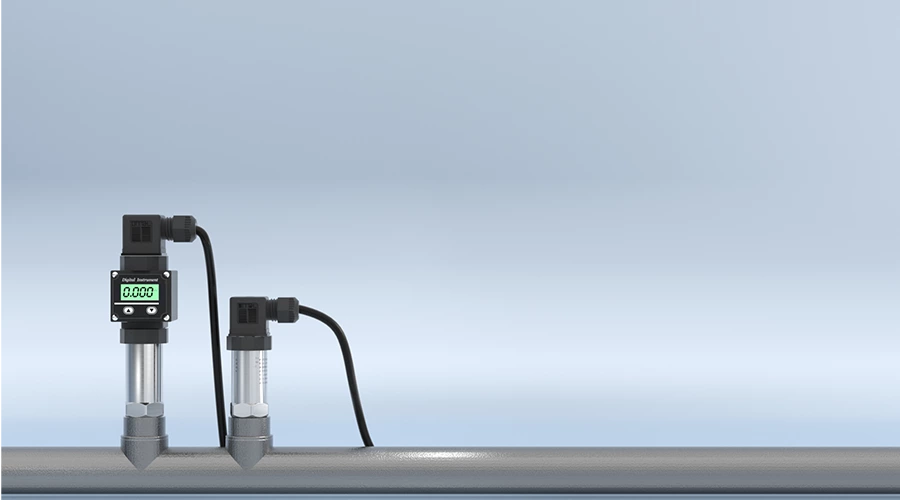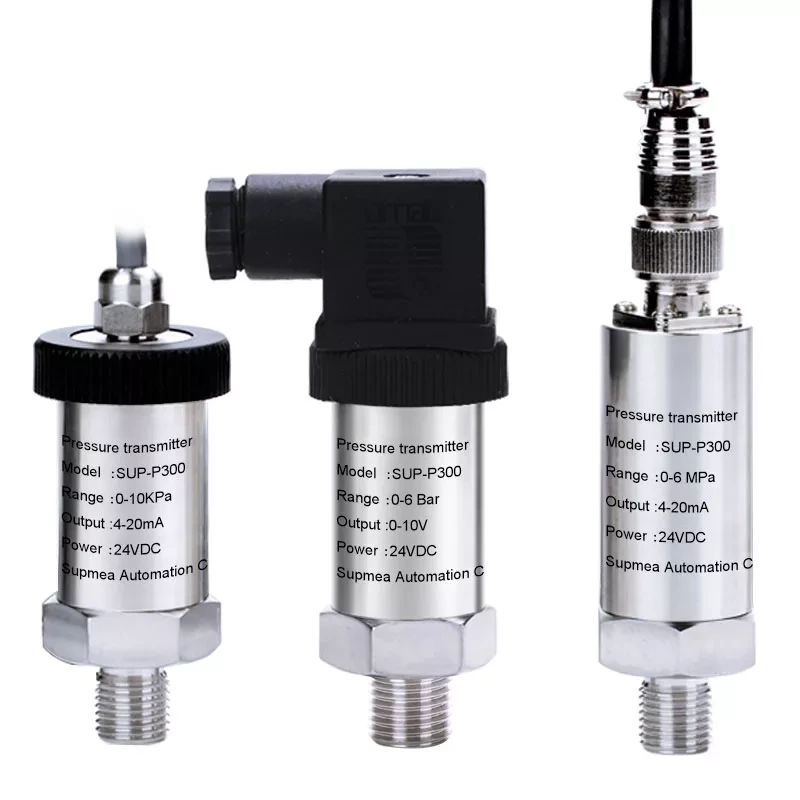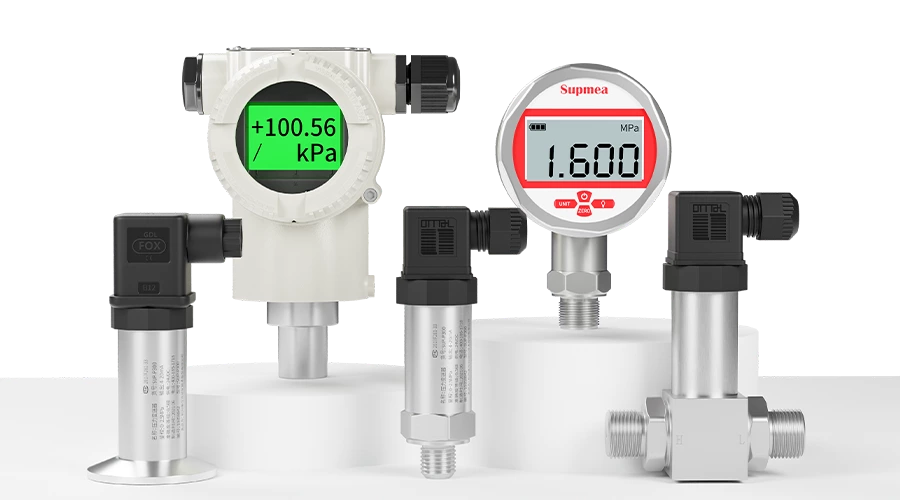How Does a Pressure Transducer Work?
Pressure transducers play a crucial role in various industries, enabling the measurement and monitoring of pressure in different systems and processes. From automotive applications to industrial manufacturing and aerospace engineering, pressure transducers provide accurate and reliable data that is essential for efficient operations. In this article, we will delve into the working principle of pressure transducers, exploring their components, functioning, and applications.
Introduction
Pressure is a fundamental physical quantity that finds extensive use in numerous industrial processes and scientific applications. To measure and monitor pressure accurately, pressure transducers are employed. These devices convert the pressure exerted on them into an electrical signal that can be easily measured and analyzed.
What is a Pressure Transducer?
A pressure transducer is a device that converts a physical pressure measurement into an electrical signal. It is a vital component in various systems where pressure monitoring is crucial, such as hydraulic systems, pneumatic systems, and HVAC systems. Pressure transducers are designed to withstand and measure pressure changes accurately and reliably.
Types of Pressure Transducers
Pressure transducers are available in different types, each suitable for specific applications and pressure ranges. The common types include:
a. Strain Gauge Pressure Transducers
Strain gauge pressure transducers use a strain gauge as the sensing element. When pressure is applied, the strain gauge experiences deformation, which changes its resistance. This change in resistance is converted into an electrical signal, providing an accurate measure of pressure.
b. Capacitive Pressure Transducers
Capacitive pressure transducers utilize the principle of capacitance change under pressure. They consist of two parallel plates with a diaphragm in between. As the pressure changes, the diaphragm deflects, altering the distance between the plates and thus changing the capacitance. This change is converted into an electrical signal.
c. Piezoelectric Pressure Transducers
Piezoelectric pressure transducers employ the piezoelectric effect, where certain materials generate an electric charge when subjected to mechanical stress. When pressure is applied, the piezoelectric crystal deforms, producing an electric charge that is proportional to the applied pressure.
Working Principle of a Pressure Transducer
The working principle of a pressure transducer involves the conversion of mechanical pressure into an electrical signal. The specific working mechanism depends on the type of transducer.
For strain gauge pressure transducers, the strain gauge deforms when pressure is applied, causing a change in its resistance. This resistance change is detected by a Wheatstone bridge circuit, which converts it into an electrical output proportional to the pressure.
Capacitive pressure transducers measure pressure by monitoring the capacitance change between the plates caused by the deflection of the diaphragm. The change in capacitance is detected by an electronic circuit, which produces the corresponding electrical output.
Piezoelectric pressure transducers generate an electric charge in response to the deformation of the piezoelectric crystal. This charge is then amplified and converted into a usable electrical signal.
Components of a Pressure Transducer
A typical pressure transducer comprises several key components that enable its functioning:
a. Sensing Element
The sensing element is the part of the transducer that directly experiences the applied pressure. Depending on the type of transducer, it can be a strain gauge, a diaphragm, or a piezoelectric crystal.
b. Signal Conditioning Circuitry
The signal conditioning circuitry processes the electrical signal generated by the sensing element. It amplifies, filters, and converts the signal into a standardized output, making it suitable for further analysis and measurement.
c. Output Interface
The output interface is the means by which the transducer communicates the measured pressure. It can be in the form of analog voltage, current, or digital signals, depending on the requirements of the application.
Calibration and Accuracy
To ensure accurate and reliable measurements, pressure transducers undergo calibration. Calibration involves comparing the transducer's output against a known standard and adjusting it if necessary. Regular calibration is essential to maintain the accuracy and performance of the transducer over time.
The accuracy of a pressure transducer is expressed as a percentage of the full-scale output. It represents the maximum deviation from the true value that can be expected. Higher accuracy transducers are typically required in applications where precise measurements are critical.
Applications of Pressure Transducers
Pressure transducers find widespread use in various industries and applications. Some notable applications include:
- Automotive industry: Engine management systems, tire pressure monitoring.
- Industrial manufacturing: Hydraulic and pneumatic systems, process control, leak testing.
- Aerospace engineering: Aircraft flight control systems, engine monitoring.
- HVAC systems: Air pressure and flow measurement.
- Medical equipment: Blood pressure monitors, anesthesia machines.

Advantages and Limitations
Pressure transducers offer several advantages, including:
- Accurate and reliable pressure measurements.
- Compact and lightweight design.
- Wide range of pressure measurement capabilities.
- Compatible with various media (liquids, gases).
- Easy integration into different systems.
However, they also have some limitations:
- Susceptibility to overpressure or pressure spikes.
- Sensitivity to temperature variations.
- Vulnerability to mechanical damage.
Future Developments
As technology advances, pressure transducers are likely to undergo further improvements. Some potential future developments include:
- Miniaturization for compact integration into small devices.
- Enhanced durability and resistance to harsh environments.
- Wireless and remote monitoring capabilities.
- Integration with IoT (Internet of Things) networks for real-time data analysis.
Supmea Pressure Transducer
The Supmea Pressure Transducer is known for its high precision and stability, making it suitable for demanding industrial environments. It typically consists of a sensing element that detects the pressure and converts it into an electrical output, such as a voltage or current signal.
These transducers can be used in a wide range of industries, including oil and gas, chemical processing, water treatment, HVAC (heating, ventilation, and air conditioning), and many others. They are commonly employed for process control, monitoring and control systems, and data acquisition.
Supmea offers a variety of pressure transducers with different specifications and features to meet specific application requirements. These may include pressure ranges, accuracy levels, output signals, temperature ranges, and compatibility with different fluids.
When selecting a Supmea Pressure Transducer, it is essential to consider factors such as the pressure range you need to measure, the required accuracy, the environmental conditions, and any specific industry standards or regulations that must be met.
Overall, Supmea Pressure Transducers provide reliable and accurate pressure measurement solutions for a wide range of industrial applications, contributing to process efficiency, safety, and control.
Conclusion
Pressure transducers are indispensable tools for measuring and monitoring pressure in various applications. They convert mechanical pressure into electrical signals, providing accurate and reliable data. By understanding their working principle, components, and applications, we can appreciate the vital role pressure transducers play in ensuring efficient and safe operations across different industries.
FAQs
Q1: How does a pressure transducer differ from a pressure gauge?
A pressure transducer converts pressure into an electrical signal, while a pressure gauge directly indicates pressure through a mechanical mechanism.
Q2: Can pressure transducers measure both positive and negative pressures?
Yes, pressure transducers can measure both positive and negative pressures, depending on their design and range.
Q3: Are pressure transducers only used for measuring fluid pressure?
No, pressure transducers can measure pressure in both fluids (liquids and gases) and certain solid materials.
Q4: How often should pressure transducers be calibrated?
Pressure transducers should be calibrated regularly, following the manufacturer's guidelines or industry standards, to ensure accurate measurements.
Q5: Can pressure transducers withstand high-pressure environments?
Pressure transducers can be designed to withstand high-pressure environments by selecting appropriate materials and construction techniques.





